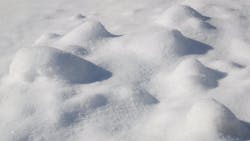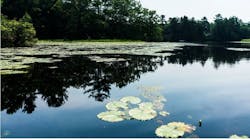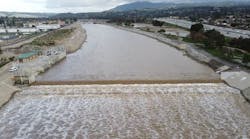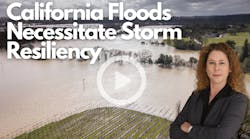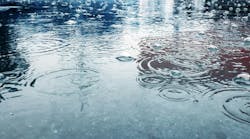A new study provides evidence arguing that seasonal snowpacks throughout most of the Northern Hemisphere have shrunk significantly over the past 40 years due to human-driven climate change, according to a press release from Dartmouth College.
Scientific data from ground observations, satellites, and climate models do not agree on whether global warming is consistently chipping away at the snowpacks that accumulate in high-elevation mountains.
The researchers report in the journal Nature that the extent and speed of snowpack loss potentially puts the hundreds of millions of people in North America, Europe, and Asia who depend on snow for their water.
The study finds the sharpest global warming-related reductions in snowpack — between 10% to 20% per decade — are in the Southwestern and Northeastern United States, as well as in Central and Eastern Europe.
"We were most concerned with how warming is affecting the amount of water stored in snow,” said first author Alexander Gottlieb, a PhD student at Darmouth. “The loss of that reservoir is the most immediate and potent risk that climate change poses to society in terms of diminishing snowfall and accumulation.”
The study’s researchers focused on how global warming's influence on temperature and precipitation drove changes in snowpack in 169 river basins across the Northern Hemisphere from 1981 through 2020. The loss of snowpacks potentially means less meltwater in spring for rivers, streams, and soils downstream when ecosystems and people demand water.
"Our work identifies the watersheds that have experienced historical snow loss and those that will be most vulnerable to rapid snowpack declines with further warming," Gottlieb said. "The train has left the station for regions such as the Southwestern and Northeastern United States. By the end of the 21st century, we expect these places to be close to snow-free by the end of March. We're on that path and not particularly well adapted when it comes to water scarcity."
Water security is only one dimension of snow loss, said Justin Mankin, an associate professor of geography and the paper's senior author.
The Hudson, Susquehanna, Delaware, Connecticut, and Merrimack watersheds in the Northeastern U.S., where water scarcity is not as dire, experienced among the steepest declines in snowpack.
Gottlieb and Mankin programmed a machine learning model to examine thousands of observations and climate-model experiments that captured snowpack, temperature, precipitation, and runoff data for Northern Hemisphere watersheds.
The authors found that 80% of the Northern Hemisphere's snowpacks — which are in its far-northern and high-elevation reaches — experienced minimal losses. Snowpacks actually expanded in vast swaths of Alaska, Canada, and Central Asia as climate change increased the precipitation that falls as snow in these frigid regions.
But it is the remaining 20% of the snowpack that exists around — and provides water for — many of the hemisphere's major population centers that has diminished. Since 1981, documented declines in snowpack for these regions have been largely inconsistent due to the uncertainty in observations and naturally occurring variations in climate.
Many snow-dependent watersheds now find themselves dangerously near a temperature threshold Gottlieb and Mankin call a "snow-loss cliff." This means that as average winter temperatures in a watershed increase beyond 17 degrees Fahrenheit (minus 8 degrees Celsius), snow loss accelerates even with only modest increases in local average temperatures.
Many highly populated watersheds that rely on snow for water supply are going to see accelerating losses over the next few decades, Mankin said.
"It means that water managers who rely on snowmelt can't wait for all the observations to agree on snow loss before they prepare for permanent changes to water supplies. By then, it's too late," he said. "Once a basin has fallen off that cliff, it's no longer about managing a short-term emergency until the next big snow. Instead, they will be adapting to permanent changes to water availability."
